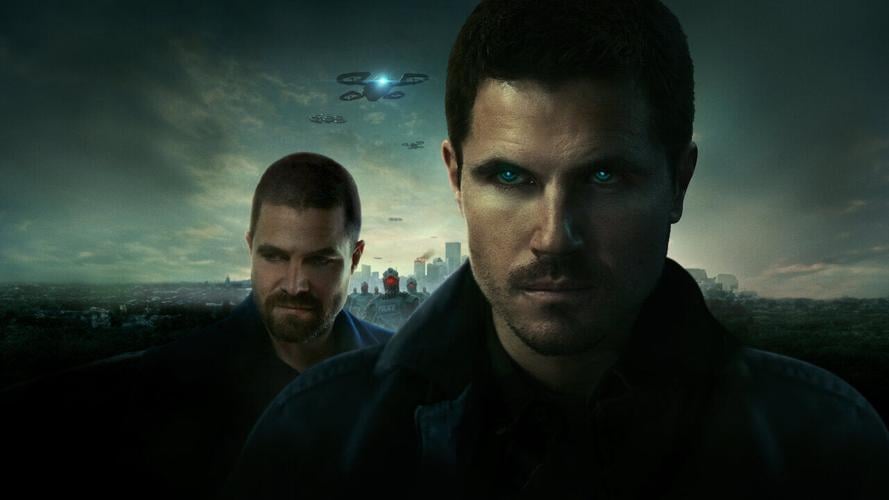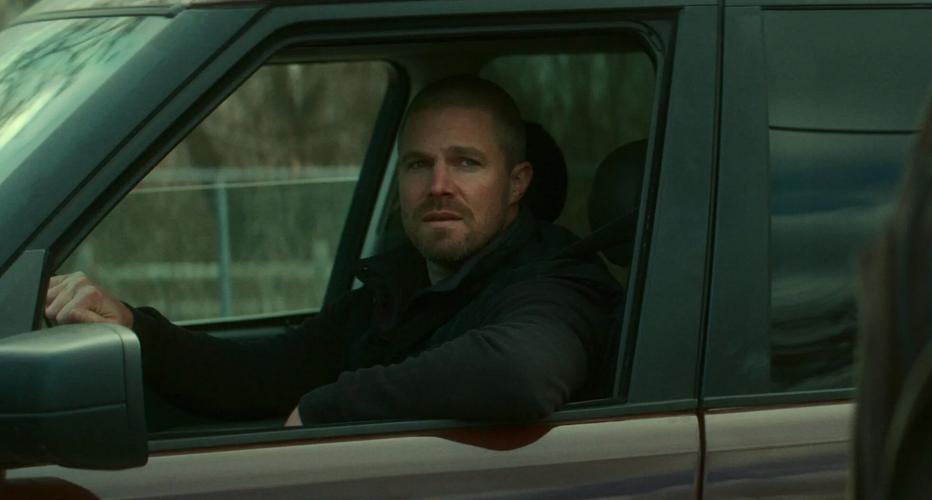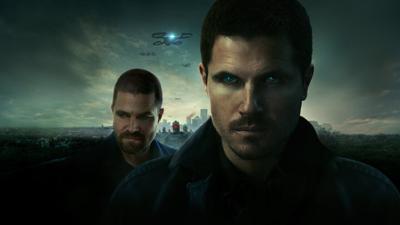Stephen Amell and Robbie Amell are cousins. They're also Canadian actors who became famous on television playing superheroes. Stephen Amell is the most successful, having been the lead in the long-running series on CW called Arrow (2012). Nearly a decade ago, the two of them crowd-funded a short film called Code 8 (2016) that became the basis for the 2019 feature in which both Amell actors starred. This film, directed and co-written by Jeff Chan, is the sequel to that feature. The premise is a futuristic tale where 4-percent of the population are born with superpowers but they are treated like pariahs and forced to live in poverty. Essentially, the premise is akin to that of X-Men (2000).
In my review of the first feature, I was critical of the world-building being very narrow. An opening montage is meant to explain the history, but it was too narrow for me, limiting the whole thing to an employment problem. The 2000 feature and even the 90's animated series for the X-Men had better and more expansive world-building that went into politics and science, etc. The first feature was essentially using a super-hero framework to tackle social issues like healthcare costs and undocumented workers. The X-Men franchise did a similar thing of tackling social issues, using a super-hero framework. This sequel continues that tradition. The social issue in question here is police reform and police corruption akin to the Black Lives Matter movement, minus any Black people in the cast.

Robbie Amell (The DUFF and The Babysitter) reprises his role of Connor Reed, a man who lives in Lincoln City, a fictionalized version of Toronto. He resides in a crappy apartment, in what essentially is a ghetto. Connor has super-powers. He can shoot electricity out of his hands and other parts of his body. Yet, he currently works as a janitor at a community center. As the last film establishes, he can't get a better job because people discriminate against super-powered individuals. Yet, that seems so unlikely.
The film opens with Connor getting out of prison, so him having super-powers is rather moot. People released from prison have trouble with employment, so the fact that he has super-powers is not a factor in his economic situation, not any more. The first feature blamed a lot of super-powered people's job discrimination or job loss on robotic automation. Yet, that wouldn't only affect super-powered people. It would affect all. Some super-powered people have the ability to heal magically. If someone could do that, then the idea that healing powers would make them the least employable person at a hospital or clinic for example is ridiculous. A robot couldn't do magical healing, so the discrimination against super-powered people never fully squares in this world. We only can accept it through world-building that's so narrow.

Sirena Gulamgaus (Transplant and Orphan Black) co-stars as Pavani Gilani, a 14-year-old girl who also has electricity powers. She doesn't shoot electricity. She seems to be able to control or manipulate electronic devices. Much like the Sentinels in X-Men, this film also has robotic adversaries controlled by the government. Specifically, the robots here are robotic dogs or K9s. When Pavani witnesses one of these K9s commit an illegal act, one ordered by a corrupt police officer, she becomes put in serious danger and has to go on the run.
She encounters Connor who decides to help her. The two of them then go on the run together. It's a thriller, not unlike many thrillers of two people on the run from the cops or the government. This thriller is bolstered because the government has all this advanced technology to track them and all this weaponry that outmatches Connor and Pavani even with all their powers. That dynamic was just demonstrated to various degrees in The Creator (2023). The visual effects aren't as Oscar-worthy as that 2023 science-fiction flick, but the relationships depicted here feel more impactful or emotional.

Stephen Amell (Heels and Arrow) also reprises his role of Garrett, a criminal who is basically a drug runner who peddles psylocke, an extract from the spinal fluid of super-powered people. If this were X-Men, he would be the Magneto of this scenario, who was the Malcolm X of that comic book. He wants to protect super-powered people through any means necessary. Not to say Malcolm X was this way, but Garrett also wants to enrich himself and perhaps procure some kind of political power. If he has to sell drugs that ruins lives or align himself with murderers of his own people, he'll do it.
Initially, one might assume that the relationship between Connor and Pavani would be core to this story. Yet, the relationship between Connor and Garrett is what's really at stake. The film could've done more with that relationship. The film mainly moves from set-piece to set-piece rather quickly, almost too quickly to develop the relationship any deeper. The action sequences also speak to the budget of this film, which probably isn't much. The action, for example, isn't as great as something on the CW, mostly meaning we don't get a lot of it.

Alex Mallari Jr. (Ginny & Georgia and The Adam Project) rounds out the cast as Sergeant Kingston, the aforementioned corrupt police officer. He had one short scene in the previous film and the Amell actors bring him back in a larger role here. He's just as intriguing as the villain in The Creator and more of a villain than what was had in the previous film. There's more to Kingston that's revealed at the end, which the film could've done more to develop. This sequel attaches a bit of a political component regarding Kingston with which the film does nothing substantial. Mallari is a great screen presence and engaging actor. I wish Chan had given him more. For example, there's only one scene with Kingston's wife. There should've been more between Kingston and his wife in order to better understand him.
Rated TV-MA.
Running Time: 1 hr. and 40 mins.
Available on Netflix.













